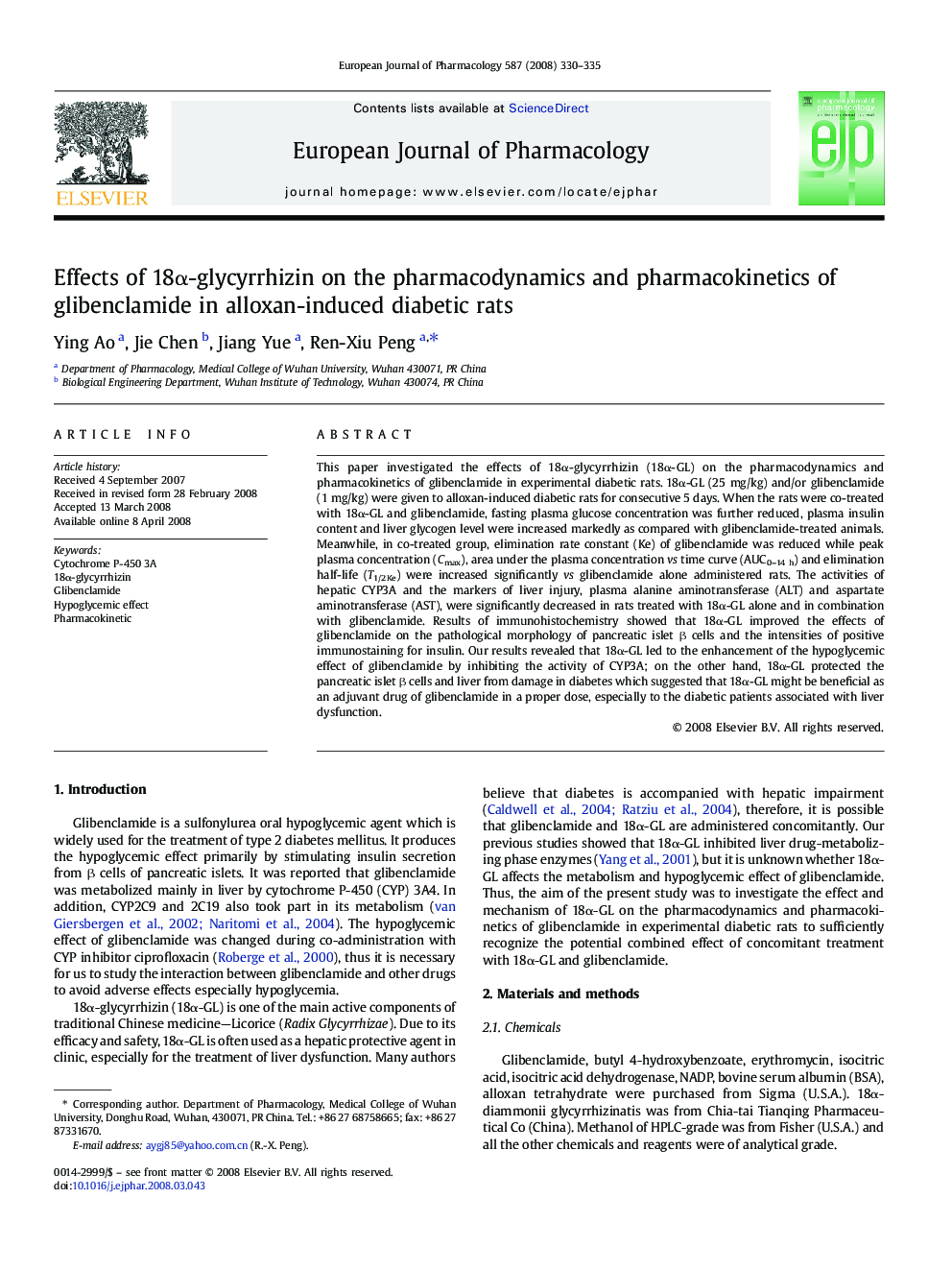| Article ID | Journal | Published Year | Pages | File Type |
|---|---|---|---|---|
| 2535364 | European Journal of Pharmacology | 2008 | 6 Pages |
This paper investigated the effects of 18α-glycyrrhizin (18α-GL) on the pharmacodynamics and pharmacokinetics of glibenclamide in experimental diabetic rats. 18α-GL (25 mg/kg) and/or glibenclamide (1 mg/kg) were given to alloxan-induced diabetic rats for consecutive 5 days. When the rats were co-treated with 18α-GL and glibenclamide, fasting plasma glucose concentration was further reduced, plasma insulin content and liver glycogen level were increased markedly as compared with glibenclamide-treated animals. Meanwhile, in co-treated group, elimination rate constant (Ke) of glibenclamide was reduced while peak plasma concentration (Cmax), area under the plasma concentration vs time curve (AUC0–14 h) and elimination half-life (T1/2Ke) were increased significantly vs glibenclamide alone administered rats. The activities of hepatic CYP3A and the markers of liver injury, plasma alanine aminotransferase (ALT) and aspartate aminotransferase (AST), were significantly decreased in rats treated with 18α-GL alone and in combination with glibenclamide. Results of immunohistochemistry showed that 18α-GL improved the effects of glibenclamide on the pathological morphology of pancreatic islet β cells and the intensities of positive immunostaining for insulin. Our results revealed that 18α-GL led to the enhancement of the hypoglycemic effect of glibenclamide by inhibiting the activity of CYP3A; on the other hand, 18α-GL protected the pancreatic islet β cells and liver from damage in diabetes which suggested that 18α-GL might be beneficial as an adjuvant drug of glibenclamide in a proper dose, especially to the diabetic patients associated with liver dysfunction.
